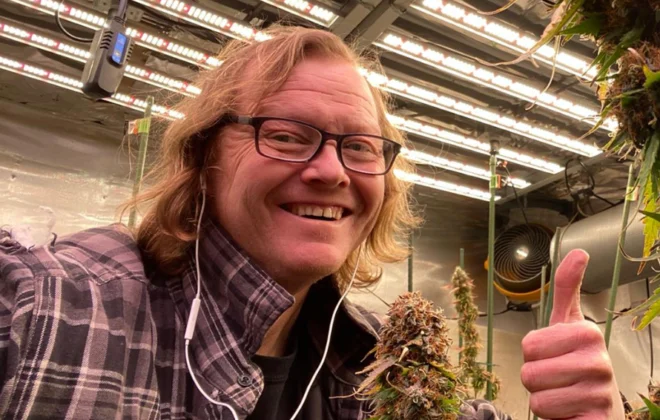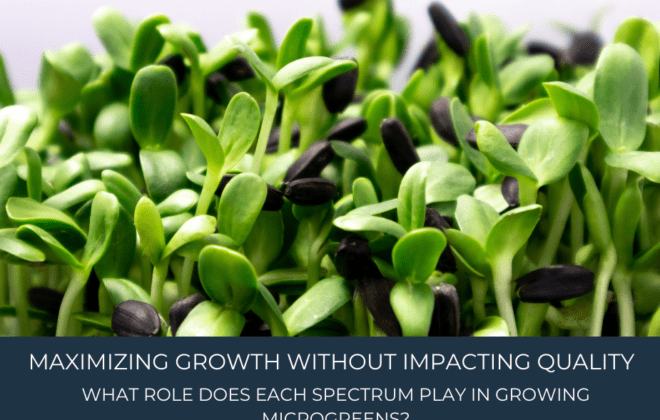The Benefits of Making Your ACMPR Operation GPP Compliant

In July 2019, Health Canada produced an updated Good Production Practices (GPP) guide for both current and future legal cannabis cultivators. The GPP’s listed are requirements for commercial operations, however, over the years, we’ve noticed that there are several factors that have hindered ACMPR/MMPR from implementing these strategies into their own production. And so, growers often start off revamping a current space and then have to convert their entire operation when they are ready to make the shift to a profitable, legal operation.
They hesitate for two main reasons:
1) Making a higher upfront investment.
2) Industry misconceptions – that current practices are equally as effective.
There is no question that setting up your operation to adhere to be GPP compliant is an investment, and a large one at that.
However, we think that the benefits far outweigh the costs. This is because setting up your infrastructure, with approved surfaces and equipment (including lighting), will allow you to: produce consistent yields, diminish the risks of infestation, and prepare you for a career as a micro cultivator when you are ready.
To start off, let’s delve into a few common misconceptions that continue to prevent ACMPR growers from investing in GPP approved materials and procedures.
Common Misconceptions:
Myth: If it Looks Clean-It’s Clean
Reality: Just because a space looks clean doesn’t mean it’s free from microscopic bacteria, fungi and pests. Ventilation, cracks in walls and tables are all surfaces that can easily harbour infestations. These pests are extremely resilient and will actively seek out the areas that your surface cleaning has missed. If you are not careful, it doesn’t take long for these pests and diseases to spread and potentially devastate your entire operation. To proactively combat any potential pest issue the entire room needs to be sprayed from top to bottom, using Health Canada compliant cleaning materials and pest control.
Myth: Plastic is an Effective Barrier
Reality: Grow rooms cladded in drywall or plywood, even if plastic is stapled to the surface, increases the risk of fungus growth (between the layers) while making it easy for pests to sneak into any cracks or small openings. Other waterproofing strategies, like painting plywood with a waterproof coating, may appear to work in the short term. However, it is not an effective long term solution (not Health Canada approved) and paint will eventually chip making it easy for mildew and pests to sneak in.
Constructing a grow room from scratch requires an upfront investment. However, in comparison to the cost of getting rid of pesky infestations, including potential crop loss, we believe that it’s well worth that upfront cost. If you’re ready to take the leap, look for floor, ceilings and walls that are non-porous, chemically resistant (so that they won’t degrade when cleaned), anti-microbial and water-resistant.
Double check the surfaces to be certain that they are free from any cracks and crevices before they are installed, and once in the room, make sure that they are properly sealed so that pests cannot get into the space.
Myth: Passive Cooling Fins Are Not Compliant.
Reality: The passive cooling fins, which are usually used to help dissipate heat, can be difficult to clean. However, this is only a challenge if the Ingress Protection rating is too low to withstand both water and solid particle ingress. A rating of IP65 or higher, provides the reassurance that the lights are both dust tight and protected against water jets (often used during the cleaning process). Aelius LEDs, for example, are rated IP65, which means that they are designed to withstand a certain amount of air and water spray keeping out both moisture and mites.
Now, that we’ve dispelled a few GPP compliant myths-it’s time to delve into lighting. Lighting, as you well know, is a vital component to a successful operation. However, the lighting requirements for GPP compliance are very specific.
Are your Lights GPP Compliant?
Lights are a vital part of your medical cannabis infrastructure. When reviewing the options, the main focus tends to be on the spectrum and its ability to both increase yields and maintain consistency. When sourcing lights that are GPP compliant, growers need to look at the output, IP rating, and the materials that were used in constructing the lights. The lights need to be made from non-toxic materials that won’t degrade when cleaned. But it doesn’t stop there, GPP compliance requires confirmation that the light chosen will perform consistently across growth cycles. Due to their consistent light intensity and higher overall IP ratings, Health Canada recommends LED lighting as a GPP compliant solution.
When setting up your infrastructure, look for an LED light that is able to maintain the same spectrum quality throughout its lifespan. This will check two boxes for you: GMP compliance and minimal disruption to productivity/yields. Our current LED’s, for example, are L90>50,000 hours.
Adding a lens overtop a diode has become a fairly common practice in order to make the LED lighting GPP compliant, and easier to clean in a commercial setting.. The challenge with this lens is that it can decrease the efficiency of the light up to 10%.
When choosing your LED light, watch out for the fairly common industry practice of placing a lens overtop of the diodes to facilitate the extensive cleaning process in a commercial setting. However, you don’t have to compromise your grow room’s performance when choosing GMP lighting. Other GPP compliant alternatives are available including waterproof nano coating, which makes it easy to clean without impacting the light’s efficiency.
Converting your ACMPR operation to a GPP compliant one can seem daunting. However, when you decide to take the leap you will reduce the risk of pathogens, increase consistency, while also opening up the opportunity to take your operation to that next level-micro-cultivation.




